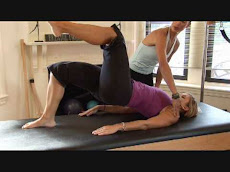Moderate physical activity, such as walking, helps you lose weight and keep your weight down. At least 30 minutes of exercise a day is recommended.
Try to exercise at least 5 days a week.
Not exercising will sabotage any weight loss plan. Add movement, even in short 10-minute bursts throughout your day to get in 30 minutes a day.
Simple measures such as parking at the far end of the parking lot and taking the stairs instead of the elevator eventually add up to help you lose weight.
Exercise strengthens your muscles and improves the function of your heart and lungs.
If you are obese, particularly if you are inactive or have medical problems, check with your health care provider before starting an exercise program.Walking
When walking for weight loss, distance is important, not speed. Wear a pedometer to measure your steps and then find ways to add steps during your daily activity.
To exercise, walk at a pace and distance that puts no strain on the body. Set reasonable goals. If you walk until you become tired, you will be exhausted when you stop.
Walk with smooth, rhythmic motions at an easy pace.
Each time you walk, walk slowly for the first 5 minutes to warm up. After 5 minutes, walk for 10 minutes at a faster rate if you can. Do not overdo it. You may stop to rest at any time.
When you have walked for 10 minutes without stopping, your first goal has been reached. The new goal should be to walk for a little longer time (say, 12 minutes). Continue to set new goals without overdoing it. It is important not to walk too fast or too long.
Chart your progress.Other activities
Ride your bicycle to work or to the store.
Buy an exercise bike and pedal while watching TV or talking on the phone. Keep track of your mileage.
Join an exercise class appropriate for your level of activity and your medical condition. Water aerobics is a popular choice. Start slow.
Even weekend chores use calories if you do them the physical way.
Skip the riding lawn mower and use a push mower.
Wash your car manually.
Use a rake, hoe, and shovel for gardening chores.Exercise tips
To let your skin breathe during workouts, wear loose cotton clothing. Wear comfortable jogging shoes or sneakers.
Remove makeup before exercising.
Drink plenty of cool, not cold, water before and after exercising. This will replace water lost by perspiration and prevent dehydration. If you want to carry a water bottle, you can drink while exercising.
Check your pulse rate continuously (every 5 minutes) while exercising.
Normal pulse rate may vary between 60 and 90 beats per minute.
Your pulse should increase somewhat while exercising. The pulse rate may increase up to 120. It is normal to become somewhat short of breath. If you are so short of breath that you cannot speak comfortably, stop for a rest and then continue at a slower rate.
While exercising, make it a point not to hold your breath. Holding your breath deprives the body of oxygen. Inhale with one movement, and exhale with another.
Do not continue exercising if you feel pain. Stop and take a break. If you continue to feel pain, talk to your health care provider.
Do not take a shower immediately after exercising. Allow 25 minutes to elapse, then take a brief, lukewarm shower.
Keep a record of your activity. You will see progress over time.
Subscribe to:
Post Comments (Atom)



No comments:
Post a Comment